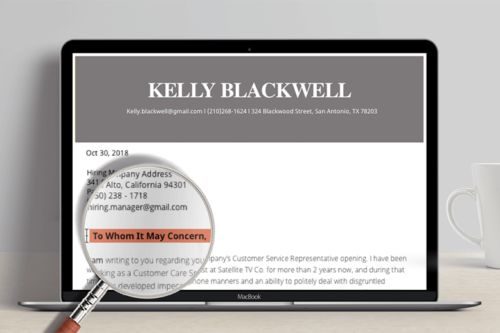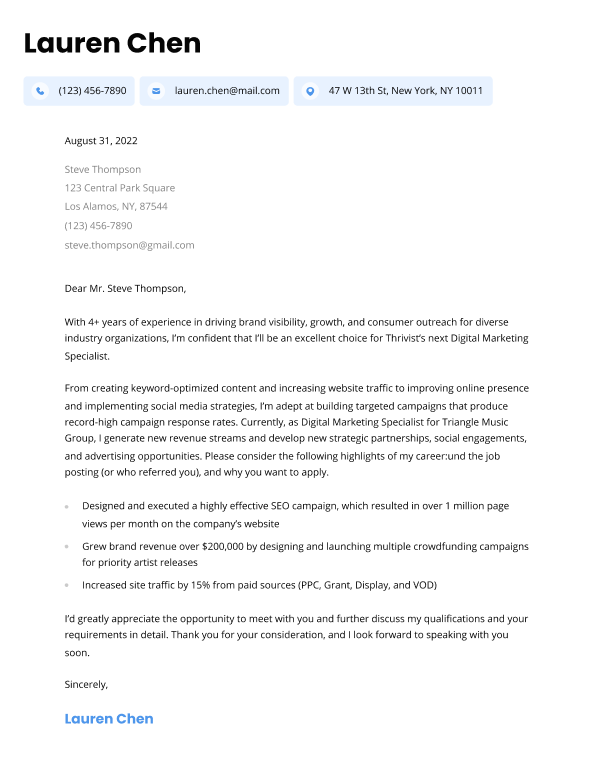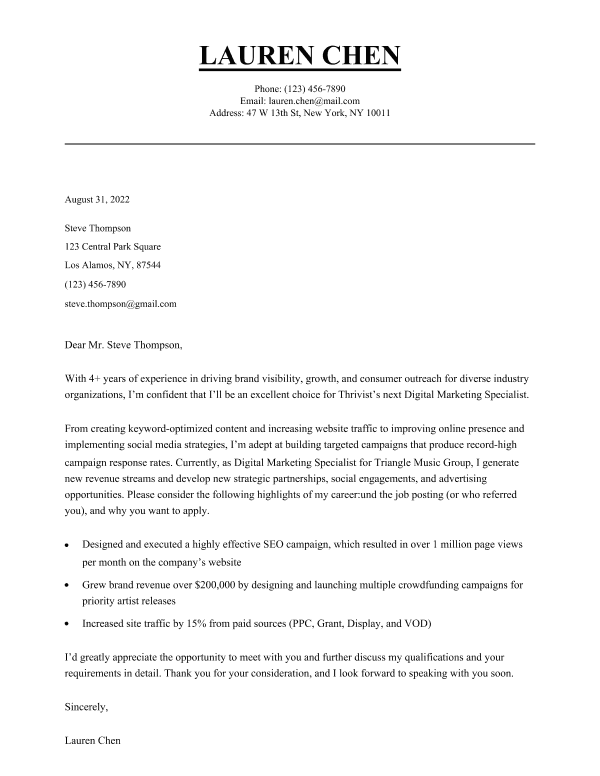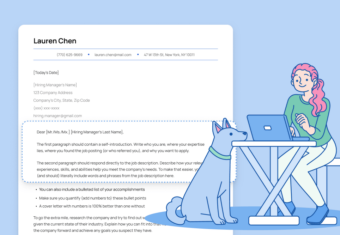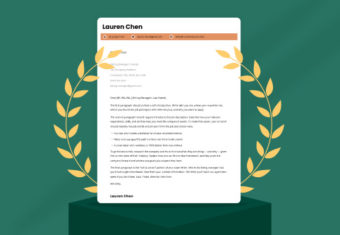Should I use “To Whom It May Concern”?
You shouldn’t use “To Whom It May Concern” on a cover letter unless you have no other choice. But if you must, make sure you know how to do it properly and look at a cover letter sample first before drafting your own.
When you apply for a job, your goal is to impress the hiring manager and get called in for an interview. Using “To Whom It May Concern” in your cover letter won’t help you achieve this goal.
Addressing your cover letter in such a vague, impersonal way shows you didn’t spend any time researching the position, and isn’t a good look for someone truly interested in a job.
What about “Dear Sir or Madam”?
Similar to writing “To Whom It May Concern”, avoid “Dear Sir or Madam“.
When’s the last time you’ve heard the word “madam” spoken in public? It’s simply outdated language.
If you take some time and look into the job opening, you can find a better way to address the person receiving your cover letter.
Our free-to-use cover letter builder can make you a cover letter in as little as 5 minutes. Just pick the template you want, and our software will format everything for you.
5 alternatives to “To Whom It May Concern”
Here are five better alternatives to “To Whom It May Concern” that show you’ve put in a bit more effort into your application:
1. Dear [Mr./Ms./Mrs./Miss] [Last Name],
The best greeting on a cover letter is “Dear” followed by the recipient’s title and last name. It’s simple, clear, and professional.
So if you find out that the hiring manager’s name is “Jake Lopez,” you can write “Dear Mr. Lopez,” at the top of your letter.
Mrs., Miss, or Ms.?
If the hiring manager is a woman, use “Ms.”. Or you can use “Mrs.” or “Miss” if you know she prefers these titles. For example, if the job posting states “Please address all job applications to Miss Courtney Rodham”, address your cover letter like this:
Dear Miss Rodham,
How to handle ambiguous names
The gender-neutral title “Mx.” is also becoming more popular for addressing non-binary individuals and people with unisex names, like “Jay Winter.”
Dear Mx. Winter,
However, it’s still rare, so only use it if you know the recipient prefers it. Otherwise they might think it’s a typo.
Look up the company you’re applying to on LinkedIn. You can usually track down many employees and their job titles there, and figure out who you’re sending your cover letter to.
2. Dear [Full Name],
Another option for dealing with unisex names like “Jay Winter” is just to use “Dear” and their full name.
Dear Jay Winter,
This is the best option if you’re writing to someone who identifies as a third gender or non-binary.
Foreign names
In some countries, including Japan, Taiwan, and Hungary, the last name comes first. If you’re unsure which name is someone’s last name, it’s best to use their full name in the greeting.
Dear Liao Shou-zheng,
Explore the company’s website for names and titles. You’ll often discover the names of directors and department heads with a bit of effort (and they’re usually the people reading applications).
3. Dear [Job Title],
If you can’t locate the right name, you can also get away with using just their job title:
Dear Office Manager,
Look for the hiring manager’s specific job title on the listing, under the “Reports to” heading:

While it’s not as personal as using an actual name, addressing the reader by their title shows you’re aware of who you’d be reporting to, and that you’ve at least looked into the role a bit.
Can’t find the hiring manager’s name online? Try calling the company. Ask whoever answers whom you should address your cover letter to.
4. Dear [Department] Head,
Still no luck finding a real name? Address your cover letter to the department head:
Dear Accounting Department Head,
If you can’t find the name of the department, make an educated guess. For example, an accountant applicant would address their cover letter to the “Accounting Department Head” or “Head of Accounting.”
Use a web app like Hunter or Voila Norbert to find the names and job titles of employees associated with a company website.
5. Dear Hiring Manager,
Sometimes you won’t be able to find any details about anything related to the job listing online.
For example, if you’re applying to a large Fortune 500 company, it might be unclear which department you have to apply to, so you’ll need to address your cover letter to the hiring manager like this:
Dear Hiring Manager,
When to use “To Whom It May Concern”
“To Whom It May Concern” is OK when you’re not trying to impress the reader of the letter or email.
For example, you’re sending out a letter of complaint because you’re unhappy about the service you’ve received, or one of your colleagues has asked you to provide a letter of recommendation for them.
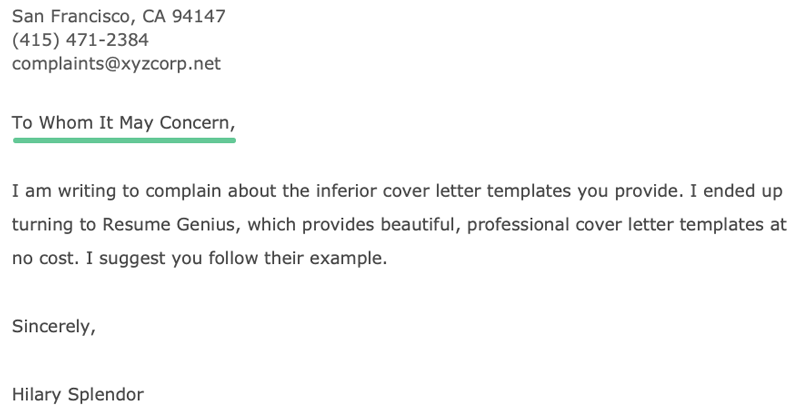
How to write “To Whom It May Concern”
When writing “To Whom It May Concern”, capitalization is key. All five words are typically capitalized.
When starting a cover letter with “To Whom It May Concern,” the format is up to you. You can either use a colon, which is the traditional format:
To Whom It May Concern:
Or you can use a comma:
To Whom It May Concern,
Either way, remember that “To Whom It May Concern” is a traditional, formal opening, so don’t get creative and use a reworked version like “To Whomever This May Concern,” or “To Whom This May Concern.” These variations will make you look like you don’t understand how to write a cover letter properly.
Your cover letter should summarize why the hiring manager should hire you, and every detail counts — especially if you’re writing a short cover letter that gets right to the point.
Click to rate this article
4.5 Average rating

